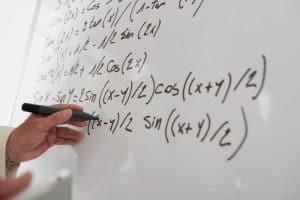What are Your Math Statistics?
Mathematics is a vast and fascinating field that encompasses a wide range of topics and branches. One important area within mathematics is mathematical statistics, which involves the analysis and interpretation of data. Understanding your math statistics can empower you to make informed decisions, draw meaningful conclusions, and uncover patterns and trends within a set of data. In this article, we will explore the key concepts and techniques of mathematical statistics and how they can be applied in real-world scenarios.
(Looking for a “Top math consultant expert“? Contact us today!)

Mathematical statistics can be broadly categorized into two branches: descriptive statistics and inferential statistics. Descriptive statistics focuses on summarizing and presenting data in a clear and concise manner. It involves organizing data through graphs, charts, and tables, as well as calculating numerical measures such as the mean, median, and mode. Descriptive statistics help us understand the characteristics and patterns within a given dataset.
On the other hand, inferential statistics takes data analysis a step further by using sample data to make inferences about a larger population. This branch of statistics involves hypothesis testing, confidence intervals, and regression analysis. Hypothesis testing allows us to determine whether an observed effect or relationship in the sample data is statistically significant and can be generalized to the entire population. Confidence intervals provide a range of values within which a population parameter is likely to fall. Regression analysis helps us understand and quantify the relationship between two or more variables.
Probability theory is a fundamental concept in mathematical statistics. It deals with the likelihood of events occurring and forms the basis for many statistical techniques. Probability theory enables us to calculate the chances of various outcomes and make predictions based on that information. Understanding probability allows us to make informed decisions in uncertain situations and assess the likelihood of specific events or scenarios.
Random variables and probability distributions are essential components of statistical analysis. A random variable is a variable that can take on different values based on the outcome of a random event. Probability distributions describe the likelihood of different outcomes for these variables. Examples of probability distributions include the normal distribution, binomial distribution, and Poisson distribution. These distributions help us model and analyze various phenomena, from the heights of individuals in a population to the number of occurrences of a specific event.
Statistical analysis finds applications in a wide range of fields, including business, engineering, social sciences, medicine, and public health. In the business world, statistical analysis can be used to evaluate market trends, analyze customer behavior, and make informed decisions about product development and marketing strategies. In engineering, statistical techniques help analyze and optimize processes, assess product reliability, and control quality. In the social sciences, statistical analysis is used to study human behavior, conduct surveys, and analyze survey data to draw meaningful conclusions. In medicine and public health, statistical analysis plays a critical role in clinical trials, epidemiological studies, and health data analysis to assess the effectiveness of treatments, identify risk factors, and guide public health policies.
To understand and apply mathematical statistics effectively, a strong foundation in mathematics is crucial. Concepts from algebra, calculus, and probability theory form the building blocks of statistical analysis. Proficiency in mathematical techniques and formulas allows you to manipulate data, perform calculations, and apply statistical models. Moreover, as technology continues to advance, proficiency in computer programming and data analysis software such as R or Python is becoming increasingly important in the field of statistics. These tools enable you to efficiently process large datasets, perform complex statistical analyses, and visualize and interpret results.
In conclusion, mathematical statistics is a powerful tool for analyzing and interpreting data in various fields. Understanding your math statistics empowers you to make informed decisions, uncover patterns and trends, and draw meaningful conclusions from data. By utilizing descriptive and inferential statistics, probability theory, and statistical techniques, you can make sense of complex data sets and gain valuable insights. Whether you are a business professional, researcher, or student, a solid understanding of mathematical statistics will equip you with the skills necessary to navigate the world of data and make evidence-based decisions.

